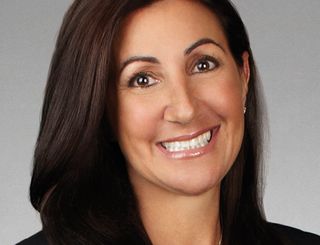In Cable, Data Will Likely Make A Difference

Related: Discovery Life’s RX: Medical Dramas and Sex
The difference could be data. Last year’s cable upfront fell a surprising 6% to $9.6 billion, and this year’s market looks lukewarm at best as ratings for most big networks continue to drop.
Some blame Netflix. Some blame cord-cutting. Some blame Nielsen. And some have been making changes to deal with a new environment.
Fox Networks Group combined its cable ad sales unit with those selling the Fox broadcast network, mirroring NBCUniversal’s consolidated sales operation. Similarly, Viacom and AMC Networks put all their networks under a single head of sales.
But the question remains how to generate higher revenue when ratings are falling. At Turner Broadcasting, which last year amalgamated its ad sales operation under president Donna Speciale, the answer is data.
Big media buyers concur.
“By being more consolidated and being more unified in how they approach the marketplace and providing me with more access to data points across their inventory, they have a better ability for them to—in what is going to be a flat to down market—hold and grow share,” says John Nitti, chief investment officer, worldwide, ZenithOptimedia.
Broadcasting & Cable Newsletter
The smarter way to stay on top of broadcasting and cable industry. Sign up below
A consolidated media operation also provides more scale for buys aiming more at specific audience targets than individual networks. “The key there is ensuring not only that they’re setting up their sales organization to sell that way, but they’re setting up their back-end inventory systems to be able to pivot their inventory in that fashion,” says Nitti.
In cable, Turner has been putting together products it calls Now Media that combine TV, data and digital to fine tune campaigns and provide better measurement for return on investment. Turner rolled out Turner Targeting Now in last year’s upfront, working with four agencies and eight advertisers. Five campaigns measured by Turner ROI Now showed 3% to 17% lifts in sales.
This year, Turner is introducing Turner Audience Now, which targets consumer behavior rather than traditional age and sex demographics.
Speciale says she is talking about selling advertising and guaranteeing on the behavioral targets. “I can’t do it for everybody right now because we’re still in a test mode. I probably will utilize 20%-30% of my inventory to do it,” she says. “And the remainder of my inventory is going to have to be sold the way it was.”
One complication will be setting prices for delivering an audience, as opposed to the traditional demographic. The current pricing has a lot of legacy issues built into it.
“Right now, if you buy us across the board, you’ll have a TBS CPM, a TNT CPM, a CNN CPM,” she says. “When they buy digital, they have one CPM across everything they purchase, right? That’s basically how this would look. So it’s very different. It’s literally apples and oranges, but we have to try to figure out what it looks like and that’s why we’re doing it together with our clients. I don’t think either side has all the answers right now.” “It’s the Wild West in terms of how you price those guarantees on both sides,” says Nitti, who is open to giving what Turner is selling a try. “We’ve done some testing and we’ll continue to do testing and scale out where applicable on a client-by-client basis.”
When buying audiences, each client has a different target. To Nitti, that means, “I don’t think we’re going to get to the point where that represents a huge portion of our upfront investment. But it’s definitely going to be a growing portion of our upfront investment from a year-over-year standpoint.”
Turner is changing its broadcast week upfront presentation to include all of its networks, not just TBS and TNT as in past years. “I guarantee you it’s not going to be 2½ hours. As a former agency person we’re not going to do that,” says Speciale, estimating the show will last 90 minutes.
Speciale says she plans to show new series but she also wants to talk about Turner’s audience-based products and the results they have generated already.
Speciale expects this year’s upfront to be more multiscreen than before, which favors Turner and its array of digital content. “When it’s all over, I think we’re going to look OK,” but across the industry “you might see winners and losers.”
Jon has been business editor of Broadcasting+Cable since 2010. He focuses on revenue-generating activities, including advertising and distribution, as well as executive intrigue and merger and acquisition activity. Just about any story is fair game, if a dollar sign can make its way into the article. Before B+C, Jon covered the industry for TVWeek, Cable World, Electronic Media, Advertising Age and The New York Post. A native New Yorker, Jon is hiding in plain sight in the suburbs of Chicago.

